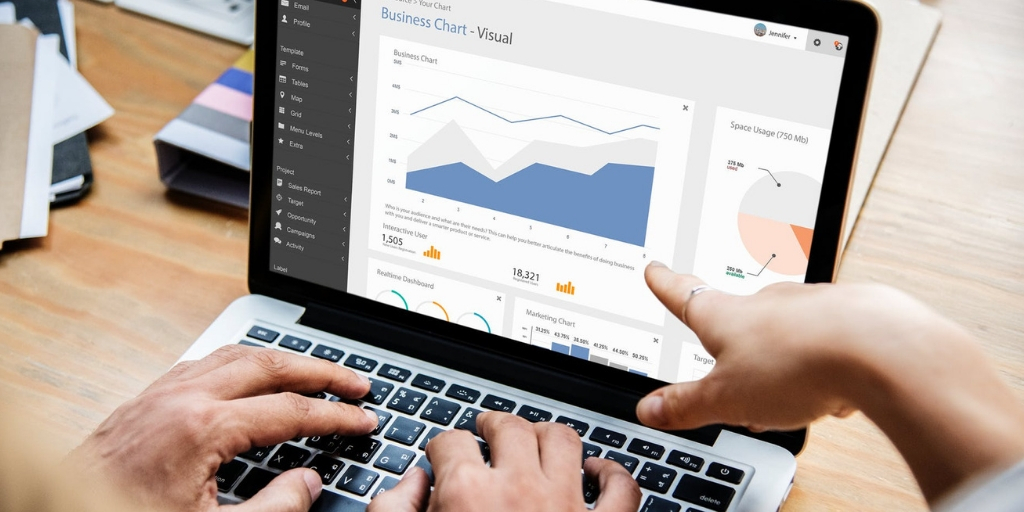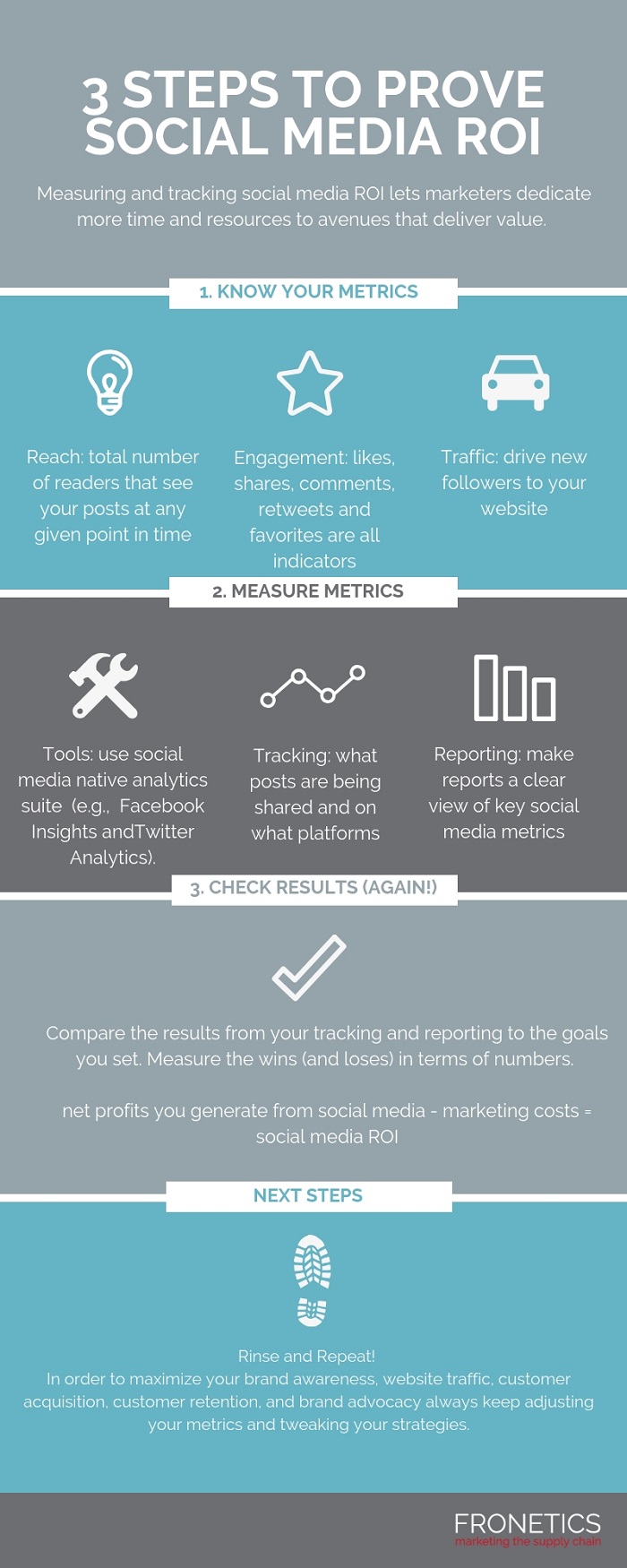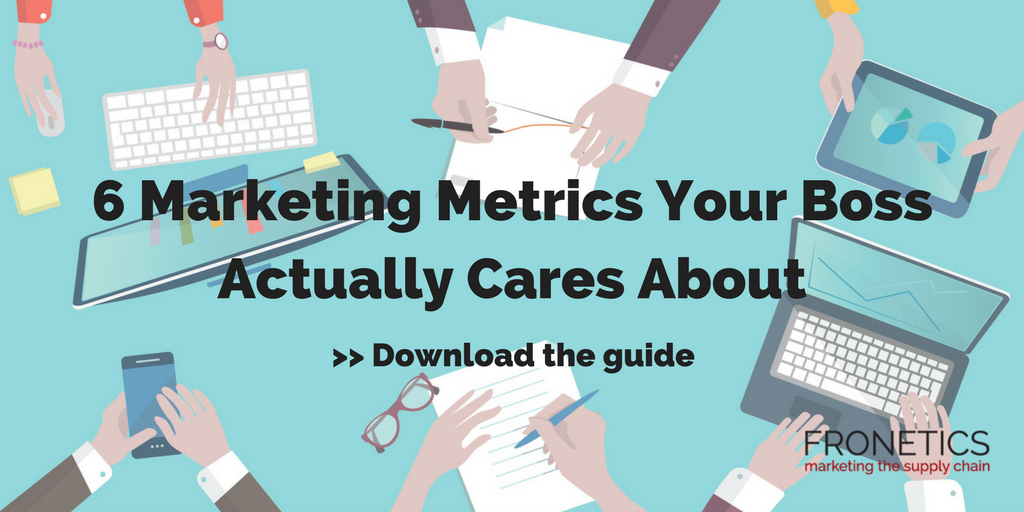
by Fronetics | Dec 17, 2018 | Blog, Content Marketing, Data/Analytics, Marketing
Implementing automation can help supply chain marketers become more efficient and more successful in earning and converting leads. Here are our most-viewed automation posts of the year.
Automation is changing the way supply chain marketers do their job. When properly executed, automation can drive efficiency and reduce time spent on repetitive tasks, freeing up marketers to focus on other priorities.
Marketing automation is the process of using software to complete repetitive marketing tasks designed to nurture sales leads, personalize marketing messages and content, and — in the process — save marketers time and effort. Supply chain marketers are using marketing automation to streamline processes and increase qualified leads.
Jumping into marketing automation can be overwhelming. Utilizing the right software and knowing where to implement automation into your marketing processes will help nurture leads and get you back to more pressing tasks.
[bctt tweet=”Utilizing the right software and knowing where to implement automation into your marketing processes will help nurture leads and get you back to more pressing tasks.” username=”Fronetics”]
Here are our top automation posts from 2018 that define how automating your marketing processes can help your efforts.
Top 5 automation posts 2018
1. Our 6 Favorite Marketing Automation Tools for Supply Chain and Logistics Marketers
The term “marketing automation” refers to a variety of tools used to automate the process of personalizing leads’ interactions with your business. The sheer variety of these tools can sometimes be overwhelming — so we’ve pulled a few of our favorites in the categories of email workflows, social media scheduling tools, and customer relationship management. Read full post
2. Increase Leads by 451% through Marketing Automation
Automation is changing today’s supply chain, and not just because robots and autonomous vehicles are scooting around warehouse floors. Supply chain marketers can use automation to drive efficiency and improve our success rates. Read full post
3. Marketing Automation: Social Media Scheduling Tools
Managing your business’ social media accounts might sound like a simple task — a fun one, even. But once it falls on your plate, it won’t take you long to realize: it’s a lot of work. Social media scheduling tools can make your job much easier — and improve your bottom line. Here are some of our favorite tools and some helpful tips for using them. Read full post
4. 5 Tips for Using Automation in Email Marketing
Marketing automation can help you provide more personalized experiences for your prospects through email. It can also save you a significant amount of time, as you won’t have to create individual emails each time a particular prospect takes a particular action.
But not everything can, or should, be automated or scheduled in advance. As you begin to incorporate automation in email marketing, here are 5 tips to get you started. Read full post
5. Marketing Automation: CRM (Customer Relationship Management)
Integrating marketing automation into your CRM strategy can improve efficiency, streamline workflows, and make communications more consistent. Here are a few examples of how CRM and marketing automation can work in tandem. Read full post
Related posts:


by Fronetics | Dec 10, 2018 | Blog, Content Marketing, Data/Analytics, Logistics, Marketing, Strategy, Supply Chain
Here are our most-viewed blog posts from 2018 about analytics and ROI, including articles about how to calculate your marketing ROI and competitive benchmarking.
Content marketing is increasingly popular in the B2B sector. In fact, 91% of B2B marketers used content marketing as a part of their strategy last year. But marketers still struggle with proving the return on investment.
Evaluating your analytics gives you valuable insight into what’s working (and what’s not) with your content marketing strategy. But 47% of B2B marketers reported not measuring content marketing ROI. And of those marketers, 86% sited lack of knowledge, time, and convenience for reasons why their company doesn’t calculate ROI.
[bctt tweet=”47% of B2B marketers reported not measuring content marketing ROI. And of those marketers, 86% sited lack of knowledge, time, and convenience for reasons why their company doesn’t calculate ROI.” username=”Fronetics”]
This year, Fronetics examined new analytics tools and numerous ways to calculate ROI — within the context of supply chain and logistics operations, as well as how these methods can be used to improve overall marketing performance. Here’s a look at our most viewed analytics and ROI posts in 2018.
Top 5 analytics and ROI posts
1. The Art of Measuring Podcast Success
Podcasts are an increasingly popular content medium, but measuring their performance is difficult. Here are some tips for measuring podcast success in spite of the challenges. Spoiler alert: it’s an art, not a science. Today’s busy professionals are increasingly driven to make their “down time” more productive and engaged. The popularity of podcasts rises every year, with more than 50% of American homes now classified as “podcast fans” by Nielsen. Read full post
2. Top 10 Social Media Analytics Tools
Analyzing your social media performance is critical to a successful marketing effort, especially in light of recent changes to Facebook’s News Feed. You need the tools to determine what’s working and what isn’t, as well as the best time to post your content for your target audience. At Fronetics, we use a variety of tools to measure social media success. Here are our 10 favorite social media analytics tools. Read full post
3. 4 Metrics to Measure the Impact of Content Marketing on Brand Awareness
A successful content marketing strategy strengthens the relationship between brands and their target audiences. And brand awareness is a key component to any successful content marketing strategy. Ultimately, the more aware audiences are of your brand, the more likely they are to buy your products or services. Read full post
4. Use These Metrics to Benchmark Marketing Performance against Your Competitors
Competitive benchmarking is the process of comparing your company’s performance against that of your competitors. You can use various metrics to benchmark what these businesses are doing better than you are and where you have the edge. Benchmarking marketing performance is an important step in the process of evaluating the success of your content marketing strategy. Read full post
5. Infographic: 4 Ways to Measure Blogging ROI
Why do you blog? It seems like a simple question, but the answer has a huge impact on the content you produce and the outcome of your efforts. As with all aspects of your business, you should give the return on investment of your content marketing efforts ample attention. That is especially true for blogging ROI, if generating new business is indeed one of the reasons you blog in the first place. Read full post
Related posts:


by Fronetics | Nov 20, 2018 | Blog, Content Marketing, Data/Analytics, Logistics, Marketing, Strategy, Supply Chain
Finding, analyzing, and using the right metrics effectively is crucial to a successful content marketing strategy.
Accountability and showing a solid return on investment is everything when it comes to ensuring that your business is allocating adequate resources to marketing. And let’s face it, too many executives think that marketing is, at best, about supporting sales or, at worst, a department that exists to paste logos onto coffee mugs.
Writing for Marketo, Content Marketing Specialist Bryson Runser points out that as an “informed marketer, it’s your duty to infuse credibility into your organization by way of meaningful metrics that tie directly to your top and bottom line.” While the C-suite famously cares nothing about internal marketing metrics like Facebook likes or click-through rate, metrics are crucial to the success of marketing the supply chain. Not only that, effective use of metrics is the best way to establish the function and importance of the marketing department within your organization.
[bctt tweet=”Effective use of metrics is the best way to establish the function and importance of the marketing department within your organization.” username=”Fronetics”]
Numbers don’t lie
One of the main aspects of the “crisis of accountability” is a problematic view of what marketing is: “if marketing leaders insist that marketing is an art and not a science,” Runser writes,” then the department will remain isolated from other groups.” Establishing that content marketing is not only dependent upon data, but can also be measured, is key to changing that perception.
“Marketing must be able to justify their expenditures as investments in revenue and growth,” writes Runser. Of course, it’s partly a chicken-and-egg issue, since getting to the point of being able to talk about expenditures in this way does require investment from the top of your business.
We know that measuring the impact of content marketing can be tricky. But it’s not impossible. The first step is determining the right metrics to track. For more detailed ideas and analysis, check out this post, which details how to determine and use metrics to measure the impact of content marketing on brand awareness.
Why are you reporting?
Collecting and reporting on marketing ROI can feel like you’re spinning your wheels and collecting meaningless data. But it’s crucial to keep metrics focused on the main goal: to enable you and your business to make decisions that improve your marketing efforts. “This is the difference between backward-looking measurement and decision-focused management,” says Runser.
Data for the sake of data doesn’t do any good. Data should be used to shape insights, which in turn informs priorities and actions for your business. We’ve written before about the danger of vanity metrics, which have no bearing on your bottom line but can give you an inflated sense of success.
It’s very easy to fall into the trap of meaningless data collection, especially when marketers are often struggling to prove their worthiness to the C-suite. But using metrics to improve marketing’s performance will go a long way towards winning over executives. “[B]y aligning data measurements with your company’s strategic objectives,” Runser writes, “it will be easier to allocate resources by revenue impact.”
Related posts:


by Fronetics | Nov 13, 2018 | Blog, Content Marketing, Data/Analytics, Logistics, Marketing, Strategy, Supply Chain
The results are in: Artificial intelligence (AI) has significant value for many business sectors. But what are the most effective ways to apply AI to your supply chain management company?
Executives of many leading companies are looking for ways to integrate AI into their operations. A recent McKinsey & Co. study estimates that 40% of the potential value associated with data analytics today comes from techniques called “deep learning.” Deep learning refers to AI that can monitor a system and make adjustments rather than simply repeate a single task. Industry use of deep learning techniques remains relatively low as companies determine how best to use AI to meet business needs.
[bctt tweet=”Using AI this way can improve forecasting accuracy by 10-20%, allowing companies to reduce inventory costs by as much as 5% and generate 2-3% increased revenue.” username=”Fronetics”]
Supply chain management is one of the business sectors that can get the most value out of deep learning techniques. Brick-and-mortar retailers tend to see a 1-2% increase in sales revenue when they use AI to personalize promotions based on customer data analytics. Supply chain management organizations can expect to see greater benefit from AI that forecasts demand by analyzing the underlying market factors. Using AI this way can improve forecasting accuracy by 10-20%, allowing companies to reduce inventory costs by as much as 5% and generate 2-3% increased revenue.
In addition to reducing inventory costs in supply chain management organizations, deep learning can create trillions of dollars in value in marketing and sales revenue and save costs through predictive maintenance. The best way to determine how AI can serve your needs is to look at how your organization uses traditional analytics techniques: AI can often provide higher performance in conducting analytics and introduce additional layers of analysis. The technology is always improving, so the potential value for companies adopting deep learning techniques is expected to continue to rise.
There are, however, obstacles facing companies looking for ways to use AI techniques. It is essential to plan for the security and privacy issues of data analytics. Deep learning works best with large-scale datasets, which not all organizations can assemble or access. The level of expertise necessary to implement and service AI technology comes with added expenses, but determining the right way to apply AI to your organization makes these costs and challenges a rewarding investment.
Related posts:


by Fronetics | Oct 3, 2018 | Blog, Content Marketing, Data/Analytics, Logistics, Marketing, Social Media, Supply Chain
Use these three steps to calculate your social media ROI and prove the value of your investment.
As supply chain and logistics businesses are finally recognizing the merits of content marketing, and more specifically social media platforms, many are looking into implementing a program at their companies. But it doesn’t take much research to realize what an enormous investment it is. And how difficult it can be to prove social media ROI.
We understand the time and money it takes to successfully implement and manage a social media strategy as a part of your content marketing plan. Many companies we talk to need help convincing management that it’s a worthwhile investment. To that we say, use data!
[bctt tweet=”We understand the time and money it takes to successfully implement and manage a social media strategy, as a part of your content marketing plan. Many companies we talk to need help convincing management that it’s a worthwhile investment.” username=”Fronetics”]
But what data should you use? How do you quantify certain benefits, like growth in brand awareness? And do you really have to keep track of all the hours you spend managing social media, crafting new tweets, etc.?
Here are three simple steps to start proving your social media ROI.
Infographic: 3 steps to prove social media ROI

(Made with Canva)
Final thoughts
Once you’ve calculated ROI for your social media platforms, it’s time to think strategically about optimizing your content marketing resources in terms of allocation and timing. Having hard data helps you answer questions about which initiatives are most fruitful, what language engages your audience best, when your efforts are most likely to pay off.
Ultimately, this data-driven approach lets you continually adapt to the needs of your audience, ensuring an ongoing, robust ROI.
Have you had to prove your social media ROI? What strategies did you use?
Related posts:


by Elizabeth Hines | Sep 19, 2018 | Blog, Content Marketing, Data/Analytics, Logistics, Marketing, Supply Chain
Automation has two major benefits for supply chain marketers: it drives efficiencies and improves success rates in earning and converting leads.
When you think about automation in the supply chain, you probably don’t immediately consider marketing and sales. Perhaps you envision robots scooting around warehouse floors, or maybe you think of applications in billing, compliance reports, or order auditing. However, advances in automation have impressive implications for marketing and sales in the supply chain as well.
Automation has two major benefits for supply chain marketers. Like all automation, it drives efficiencies, allowing your team to devote more time to other core competencies. What you may not know, however, is that it also improves success rates in earning and converting leads. In fact, HubSpot reports that businesses using marketing automation to nurture leads receive a whopping 451% increase in qualified leads.
New trends in marketing automation – particularly those which function more like artificial intelligence – can streamline and improve your marketing and sales efforts. Here’s how.
Integrate marketing automation into your CRM strategy
Integrating marketing automation into your customer relationship management (CRM) strategy may not be the first thing that came to mind, but the two work beautifully in tandem.
An integrated approach will take all three of the following areas to the next level:
- Track behavior. Automation lets you go far beyond basic demographic data, seeing things like what pages your prospects are visiting, what types of content they’re interested in, and where they are in the buying cycle.
- Send targeted messages. You can use the behavioral information collected by your marketing automation tool to create and send targeted messages that are customized to your prospects’ interests and stage in the buying cycle. This means your prospects will find your messages more relevant and engaging.
- Establish clear ROI. Establishing a clear link between marketing efforts and sales is a constant thorn in the side of most marketers, but new advances in automation make measuring ROI a little clearer. Creating a campaign in your marketing automation system maps it back to your CRM, so you can correlate closed deals directly with the campaigns that created them.
Basically, combining CRM with marketing automation can give you more organizational bandwidth, more precision in your messaging and lead nurturing, and more measurable value in your campaigns.
Create targeted messages with email workflows
There’s no area in which marketing automation is more helpful than in the creation of automated but extremely pertinent email workflows to your sales leads.
Based on the information you have about your leads and/or their engagement with your website, email workflows trigger a series of pre-determined highly-relevant emails at designated intervals, inviting them to take action and helping them to move down the sales funnel.
Email workflows do require considerable work upfront as you consider individual buyer profiles, their place within the buyer’s journey, and what timely and relevant information will advance them. But thoughtful well-designed email workflows can translate to substantial time savings and increases in lead conversion later.
More marketing automation: Social media scheduling tools & chatbots
Two other areas in which automation is making a big splash in marketing and sales are social media scheduling tools and chatbots.
The targeted approach of email workflows increases their chances of being read, but I don’t need to point out that – no matter how perfect your email might be – people are still buried in emails. On average, office employees receive 121 emails per day. Only around 20% are opened, and click-through rates are even lower.
[bctt tweet=”On average, office employees receive 121 emails per day. Only around 20% are opened, and click-through rates are even lower.” username=”Fronetics”]
So, in addition to email workflows, the newest trends in automation are social media scheduling tools and chatbots. Both of them can make your job much easier — and improve your bottom line.
Social media scheduling tools
Social media scheduling tools, like those offered by HubSpot and Hootsuite, let you plan and schedule content across your social networks.
For example, HubSpot’s comprehensive CRM and marketing platform includes the ability to automatically post to social media when you publish content, as well as in-depth analytical tools for determining the best time to post to social media platforms. You can also monitor social mentions and link your social media activity with larger marketing campaigns to determine ROI.
Hootsuite lets you keep track of various social media channels at once. It also helps you perform brand monitoring, letting you know when you brand is mentioned, and what your customers are saying.
As you can imagine, using a social media monitoring tool can greatly improve efficiency, cutting into the sometimes-seemingly-endless manual hours spent on social media monitoring and posting.
Chatbots
A chatbot is s a computer program that simulates human conversation using auditory or textual methods. It communicates with your customer inside a messaging app, like Facebook Messenger, and is similar to email marketing without landing in an inbox.
Chatbots are the latest trend in marketing, and their increasing popularity is making it harder to ignore how artificial intelligence is helping shape the content marketing landscape. It’s certainly timely. Business Insider recently reported that the number of people on messaging apps surpassed the number of users on social networks!
Messaging automation is the new email automation, and it can work for supply chain and logistics industries too. Chatbots currently allow for increased customer engagement through messaging app technology that isn’t yet saturated with marketing, and your brand will also appreciate the ease of tracking and segmenting your customers through chatbots.
Marketing automation is for the supply chain
Automation isn’t just for the warehouse or the finance and billing department. It’s also for this crazy constantly-changing world of marketing in supply chain and logistics industries. Marketing automation can make a big difference in your marketing and sales efforts.
Integrating automation with your CRM strategy, creating targeted email workflows, and the newest advances like social media scheduling tools and chatbots can all add up to major time savings and substantial increases in lead conversion rates.
This post originally appeared on EBN Online.
Related posts:














